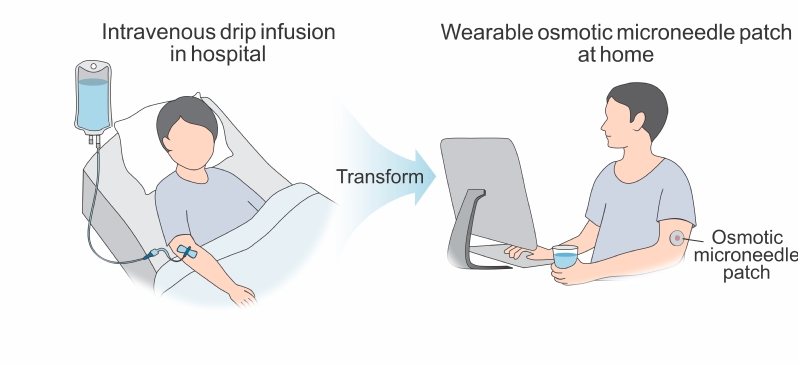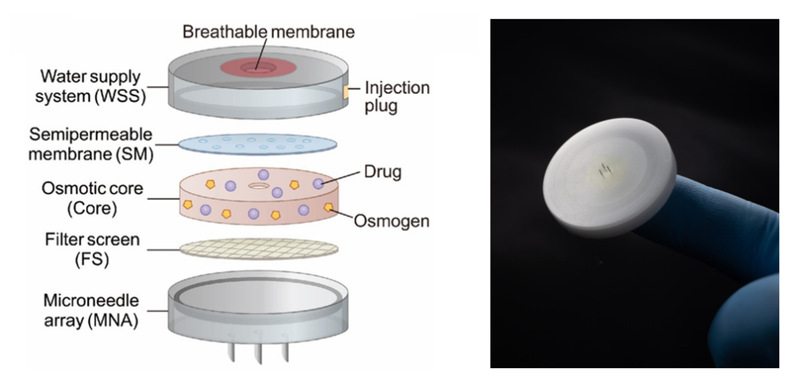Intravenous (IV) infusion, a milestone invention of modern medicine since its development during World War II, remains essential in maintaining therapeutic blood drug concentrations and minimizing toxicity. However, IV therapy requires professional administration and confines patients to medical facilities, leading to reduced compliance and elevated healthcare costs.

A research team led by professors GU Zhen, ZHANG Yuqi, YU Jicheng from the College of Pharmaceutical Sciences at Zhejiang University, in collaboration with Professor ZHU Hong-Hu from School of Medicine at Zhejiang University and Beijing Chaoyang Hospital, invented a wearable microneedle patch capable of delivering large doses of drugs consistently and painlessly. This device employs an osmotic pump mechanism to achieve controlled, sustained drug release via a minimally invasive transdermal approach. This work was recently published in Science Translational Medicine.

This coin-sized, 5-mm-thick device can load gram-level of drugs. It consists of two compartments: a drug cavity and a water cavity, separated by a semipermeable membrane. The drug cavity connects to a hollow microneedle array with length of less than 2 mm to facilitate minimally invasive transdermal delivery. The osmotic patch achieved a stable release of 225 mg cytarabine, a chemotherapy agent for acute myeloid leukemia, over 24 hours in large beagles - sufficient to meet clinical dosage requirements of 150–300 mg per day. Similarly, the patch proved effective in delivering exenatide, a diabetes medication, maintaining blood glucose control far longer than subcutaneous injections. Notably, the patch’s drug release duration was up to three times longer than that of conventional injection methods.

This microneedle patch applies solid tablet loading technology to improve the stability of therapeutics, ZHAO Sheng, Ph.D., the first author of this work explained, “peptides and protein drugs can be stored and transported at room temperature.”
Professor ZHANG Yuqi-, the co-lead author of this study, envisioned, We expect can serve as a drug delivery platform, enabling the delivery of various drugs over different durations, with simple operation and no risk of drug burst release.

We carried out this study at the interface of pharmaceutical sciences and biomedical engineering. The idea was generated during our ward rounds with physicians- we really wanted to make a change of the traditional IV infusion, to potentially enhance the quality of life of patients, Professor GU Zhen said.
At present, the technology has been evaluated in large animal models. More detailed studies associated with safety and efficacy are ongoing. The clinical studies initiated by researchers further affirmed the patch’s tolerability. Participants reported high satisfaction, with many preferring the patch over traditional IV or subcutaneous methods.
Source: College of Pharmaceutical Sciences, Zhejiang University
(From ZJU NEWSROOM)

